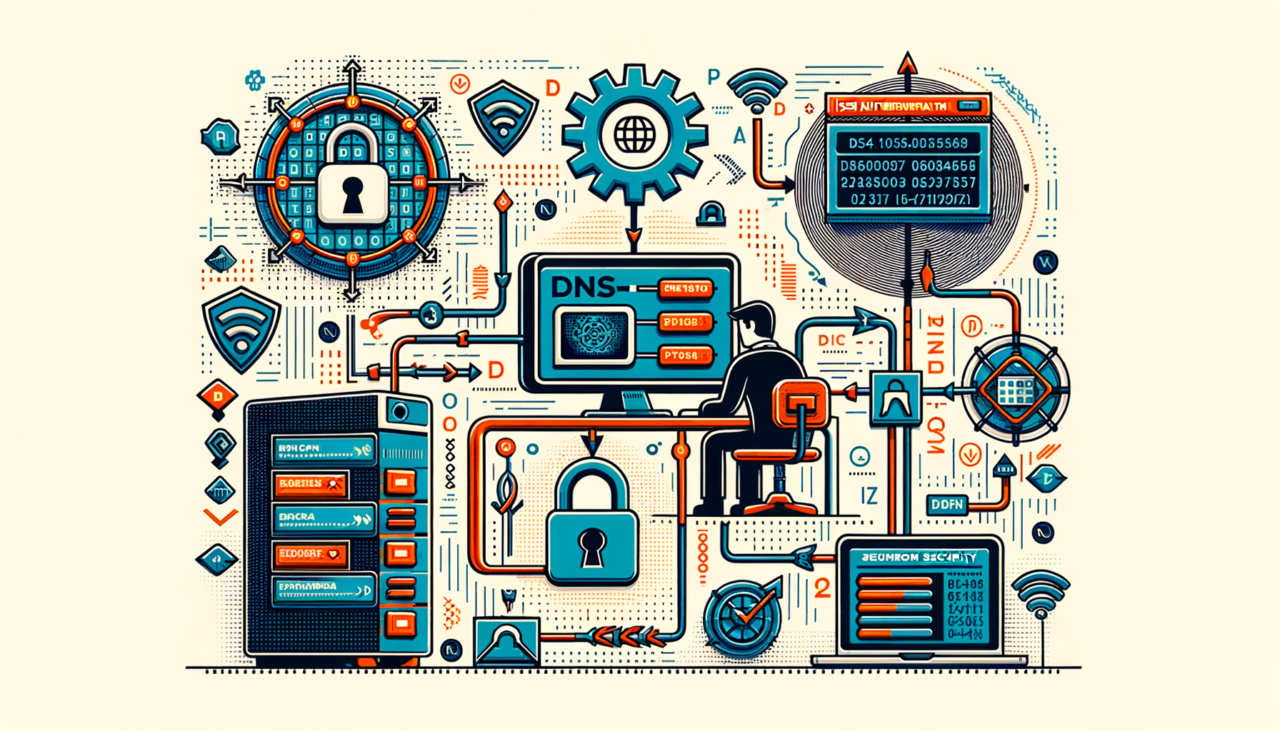Implementing DNS-Based User Authentication: A Journey Through the Kingdom of Networks
In the serene valleys of Bhutan, where the mist dances gracefully over emerald fields, stories have been passed down through generations. These tales, rich with wisdom and culture, often hold the key to understanding the complex world around us. Today, we embark on a journey through the mystical landscape of DNS-based user authentication, guided by the timeless narrative style of Bhutanese storytelling.
The Gatekeeper’s Role: Understanding DNS
Imagine a grand dzong (fortress) standing proudly atop a hill, guarding the treasures within. In the digital realm, this fortress is akin to a DNS server, an indispensable gatekeeper that translates human-friendly domain names into IP addresses—a role as crucial as the fortress that guards the kingdom.
DNS, or Domain Name System, is the unsung hero of the internet, diligently ensuring that our requests reach their intended destinations. But beyond this traditional role, DNS has evolved into a versatile tool for user authentication. Much like a trusted village elder who verifies the identity of travelers, DNS can be harnessed to verify the legitimacy of users seeking access to digital resources.
The Dance of Authentication: How DNS Works
At its core, DNS-based user authentication involves using DNS records to verify user identities. This process, reminiscent of the intricate dance of Bhutanese festivals, is both elegant and precise. Here’s a step-by-step breakdown:
-
User Request Initiation: Just as a traveler approaches the dzong with a request for entry, a user begins their journey by attempting to access a service.
-
DNS Query Dispatch: Like a messenger bird sent to verify the traveler’s identity, a DNS query is dispatched to retrieve the necessary DNS records.
-
Verification via DNS Records: The DNS server, playing the role of the wise elder, checks for specific DNS records (such as TXT records) that contain authentication details.
-
Response and Access Decision: If the records validate the user’s identity, access is granted. If not, the user is politely turned away, much like a traveler without proper credentials.
The Weaving of DNS Records: Setting Up Authentication
Let’s delve into the technical tapestry of setting up DNS-based user authentication. Consider this as weaving a traditional Bhutanese kira, where each thread and pattern plays a crucial role in the final masterpiece.
Creating DNS TXT Records
DNS TXT records are the threads of our authentication tapestry. They store key-value pairs used for verification. Here’s an example of how to create a DNS TXT record:
example.com. IN TXT "v=spf1 include:_spf.example.com ~all"
In this example, the TXT record is part of an SPF (Sender Policy Framework) setup, demonstrating the versatility of DNS records in authentication processes.
Implementing DNSSEC
To ensure our tapestry is both beautiful and secure, DNSSEC (DNS Security Extensions) can be employed. DNSSEC adds a layer of security, much like the intricate knots in a Bhutanese tapestry that prevent it from unraveling.
example.com. IN DNSKEY 256 3 8 AwEAAc...
The DNSKEY record above is part of the DNSSEC setup, ensuring that the data retrieved from the DNS server is authentic and has not been tampered with.
The Harmonious Symphony: Benefits and Challenges
As with any Bhutanese festival, where every dance step and drumbeat must be in harmony, implementing DNS-based user authentication brings both benefits and challenges:
Benefits
- Simplicity: DNS-based authentication is relatively simple to implement, like the straightforward steps of a traditional Bhutanese dance.
- Efficiency: Leveraging existing DNS infrastructure ensures efficient user verification, akin to the swift flow of a mountain stream.
- Scalability: DNS can handle large volumes of requests, much like the expansive fields that sustain entire communities.
Challenges
- Security Concerns: Without proper security measures like DNSSEC, DNS-based authentication is vulnerable to attacks, much like an unfortified dzong.
- Complexity in Management: Managing DNS records for authentication can become complex, akin to the intricate patterns of a kira.
The Final Bow: Conclusion
As our journey through the kingdom of networks comes to a close, the implementation of DNS-based user authentication emerges as a powerful tool in the digital age. By blending traditional DNS functions with modern security practices, we create a robust fortress protecting the treasures of our online world.
In the spirit of Bhutanese storytelling, may this tale of DNS and authentication inspire you to explore and implement these technologies with the wisdom and grace of the stories passed down through generations. And as you embark on your own digital adventures, remember that every byte, like every thread, weaves the intricate pattern of our connected world.

Comments (0)
There are no comments here yet, you can be the first!